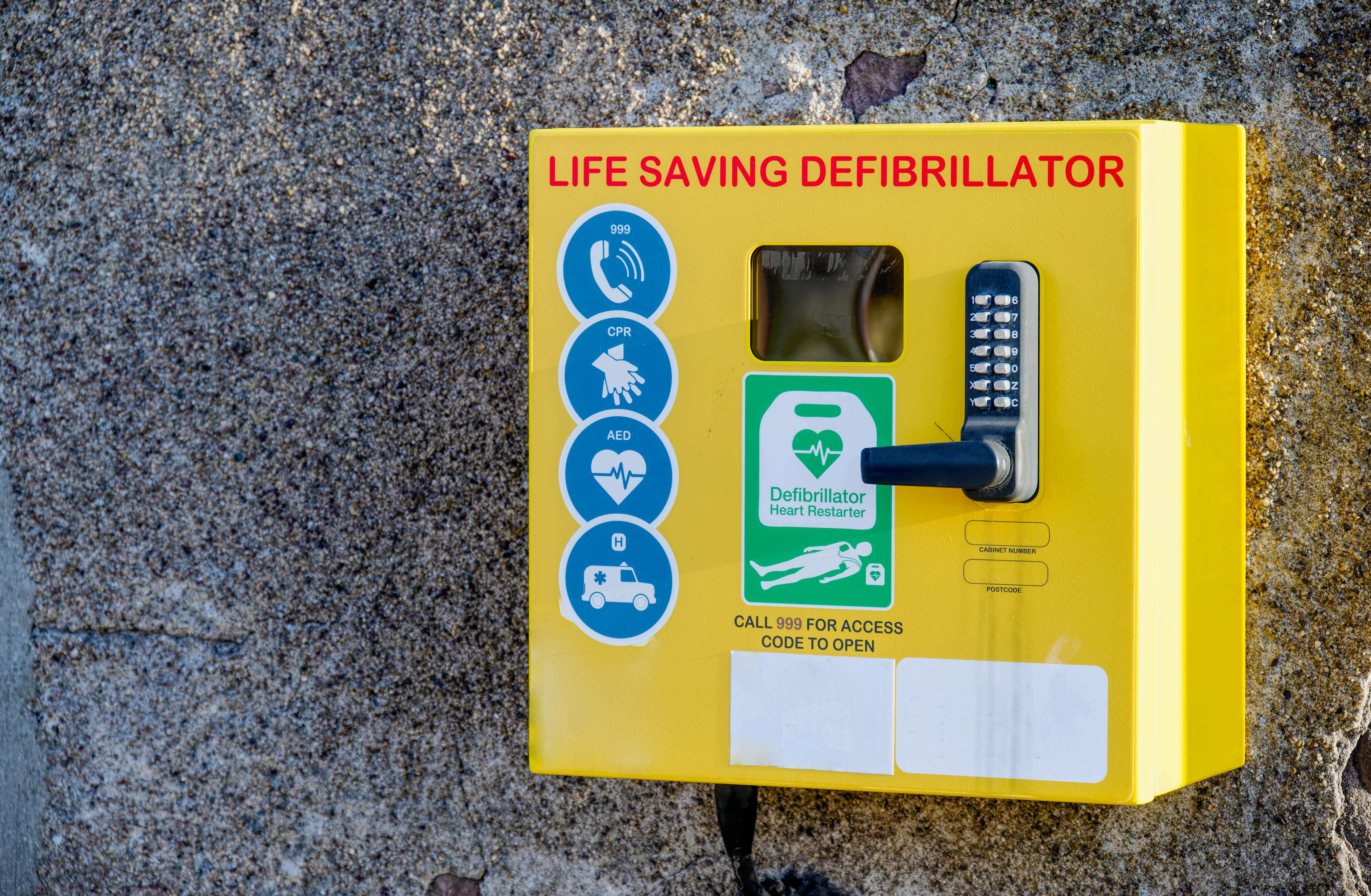HEALTH&SAFETY BULLETIN
JANUARY 2025




JANUARY 2025




Welcome to Ceres Rural’s Health & Safety Bulletin. Each quarter, we update you on industry news, topical issues, and safety alerts with the aim of supporting you in achieving best practice on your farm or estate. This edition highlights common hazards and key considerations associated with liquefied petroleum gas (LPG) storage, and explains the importance of health and safety inductions. It outlines the legal responsibilities held by farm and estate owners regarding asbestos management and draws attention to two campaigns being run to highlight the risks of asbestos and how to stay safe. The bulletin also examines the prevalence of out-of-hospital cardiac arrest, number of UK workplaces with a defibrillator, and workers’ confidence in attending to a cardiac arrest. Lastly, it summarises four examples of recent health and safety accidents and prosecutions, both from agricultural and non-agricultural settings.
Liquefied petroleum gas (LPG) is commonly used on farms and estates for functions including crop drying, greenhouse heating, poultry rearing and livestock heating. Advantages of LPG include its versatility, efficiency and portability, together with lower emissions, reduced air pollution and ground protection as, unlike liquid fuels, it cannot spill. LPG storage requires careful consideration of health and safety practices to prevent accidents and ensure compliance with regulations.


The most common hazards associated with LPG storage include:
Fire and explosion: LPG forms a flammable mixture with air in concentrations between 2% and 10%, creating a significant fire and explosion hazard if stored or used incorrectly.
Gas leaks: LPG is heavier than air and can accumulate in low-lying areas like cellars, pits and drains, potentially creating an explosive atmosphere.
Cold burns: LPG can cause severe cold burns to the skin due to its rapid vaporisation.
Asphyxiation: at very high concentrations, LPG vapour can act as an anaesthetic and asphyxiant by reducing available oxygen.
Equipment failure: tank corrosion and valve failures are common types of incident, which can lead to LPG releases.
Improper handling: failure to follow procedures for handling and operating LPG pressurised equipment can lead to accidents.
Inadequate maintenance: neglecting maintenance practices or equipment standards can increase the risk of catastrophic releases.
Proximity to ignition sources: accidental releases of LPG can cause major disasters if they find an ignition source.
Improper storage: poor positioning of LPG tanks such as inadequate isolation from other structures or proximity to buildings, can exacerbate accident consequences.
Mechanical damage: being struck by moving machinery or vehicles can damage pipes and valves, leading to gas leaks and potential ignition.
Lack of preparedness: absence of segregation barriers, warning signs and emergency procedures can increase risks.

To mitigate these hazards, the following key considerations should be made:
Position: locate LPG tanks in well-ventilated areas, away from buildings and potential hazards.
Distance: maintain appropriate safety distances of at least five metres between LPG tanks and other structures, buildings, and property boundaries.
Ground: ensure LPG tanks are on firm, level, load-bearing ground that is unlikely to flood.
Drainage: slightly grade LPG tank storage areas for surface water drainage and avoid placing tanks near untrapped drains or gullies.
Ventilation: while most LPG tanks are outdoors, ensure good airflow around tanks to prevent the accumulation of vapours.
Inspections: conduct visual inspections at least twice per month to check for signs of damage, leaks or corrosion.
Maintenance: have an OFTEC registered engineer perform annual inspections to identify potential faults or dangers.
Protection: use lockable valve covers and possibly security fencing for larger tanks to prevent unauthorised access.
Quantity: restrict volumes of LPG to those that are regularly required on the farm or estate.
Temperature: protect LPG tanks from direct sunlight and avoid painting them in colours other than those originally supplied to prevent increased heat absorption.
Ignition: prohibit smoking and naked flames for at least three metres around LPG tanks.
Separation: keep LPG tanks separate from other readily combustible materials such as gases, oils, paints, and corrosive or flammable liquids.
Segregation: erect suitable barriers at least one metre away from LPG tanks to protect them from impact from a vehicle.
Signage: display appropriate signs warning of LPG tanks on site.
Safety Data Sheets (SDSs): maintain up-to-date SDSs for LPG being stored and used.
Training: provide workers with adequate training on LPG properties, safe systems of work and emergency procedures.
Emergency: develop and maintain emergency procedures, including site plans showing the locations, postcodes and What3Words of LPG tanks.


Inductions are a critical component of farm and estate health and safety management, serving as the foundation for creating a safe and productive working environment.
Health and safety inductions are necessary for several reasons:
Legal Compliance: the Health & Safety at Work etc. Act 1974 requires employers to ensure, so far as is reasonably practicable, the health, safety and welfare at work of employees. It requires employers to ensure that persons not in their employment, are not exposed to risks to their health and safety.
Risk Mitigation: inductions help identify and communicate potential hazards, reducing the likelihood of accidents and injuries.
New Worker Orientation: inductions provide essential information to new workers who may be unfamiliar with the specific risks and procedures of the farm or estate.
Standardisation: inductions ensure that all workers receive consistent safety information, regardless of their role on the farm or estate, or existing level of experience.
Inductions also contribute to accident prevention, promoting a positive safety culture, improving productivity, reducing costs associated with accidents and higher insurance premiums, boosting worker confidence, preparing for emergencies, and, in a market where recruiting and retaining labour can be challenging, demonstrating a high level of commitment and professionalism to health and safety.
For further information on key components of and how to structure effective inductions, please contact Robert Gazely at robert.gazely@ceresrural.co.uk or 07592 041617.


Asbestos is the greatest cause of work-related deaths in Great Britain. Around 5,000 people die every year from asbestos-related diseases which typically take decades to develop and cannot be cured. The Health & Safety Executive’s statistics report that in 2022 there were 2,257 deaths from mesothelioma alone, due to past asbestos exposures.
Asbestos was used in many industries and buildings until it was banned in 1999. While buildings constructed after 2000 are therefore unlikely to contain asbestos, it remains a significant concern in agriculture due to its widespread use in earlier construction on farms and estates. Many agricultural structures built or renovated during the twentieth century are likely to include asbestos containing materials (ACMs) including in compressed asbestos-cement roof sheets, cladding and building partitions, rainwater gutters and downpipes, and barn roofs and barge boards.
The presence of asbestos in farm and estate buildings can pose serious health hazards in the event of disturbance through damage, repair, modification or demolition. If inhaled, asbestos fibres can lead to life-threatening conditions such as mesothelioma and asbestos-related lung cancer.
Farm and estate owners have legal responsibilities regarding asbestos management under the Control of Asbestos Regulations 2012 (CAR), supplemented by the Approved Code of Practice (ACoP) for Managing & Working with Asbestos: www.hse.gov.uk/pubns/priced/l143.pdf
These include:
Assessing the presence and condition of ACMs.
Creating and implementing an asbestos management plan.
Informing relevant individuals about ACM locations.
Regularly reviewing and updating the management plan.
The significance of asbestos in farm and estate buildings lies in its widespread presence, the serious health risks it poses, the legal obligations it creates for business owners, and the financial and management challenges it presents. Proper identification, management, and when necessary, safe removal of asbestos are essential for protecting the health of workers and ensuring regulatory compliance.
The Health & Safety Executive is currently running two campaigns to highlight the risks of asbestos and how to stay safe. For free resources and information, visit:
Asbestos – Your Duty:
Provides guidance and templates to support dutyholders with the legal duty to manage asbestos in buildings: https://workright.campaign.gov.uk/campaigns/asbestos-your-duty-campaign-assets
Asbestos & You:
Highlights the risks of asbestos to tradespeople and includes a free quick guide for tradespeople to download: https://workright.campaign.gov.uk/campaigns/asbestos
The British Heart Foundation estimate that 30,000 people in the United Kingdom suffer an out-of-hospital cardiac arrest each year Many of these occur outside the home, relying on members of the public or work colleagues to attend to them.
Research by Direct365 has revealed how prepared workplaces are in the event that a staff member suffers a cardiac arrest. Findings focused on the number of UK workplaces with a defibrillator on premises and workers’ confidence in attending to a cardiac arrest.
Results found that while 44% of workplaces have a defibrillator, only 23% of workers have received defibrillator training in the past year and 53% have never received training Consequently, only 14% are ‘very confident’ in using a defibrillator while 54% are ‘not confident’. This is mirrored in only 11% of the UK workforce being ‘very confident’ in responding to cardiac arrest, with an additional 33% being ‘fairly confident’.In terms of defibrillator availability, 24% of workers do not know if their organisation has a defibrillator and 55% do not know where their nearest public defibrillator is located.


It is not compulsory for employers to purchase defibrillators to comply with the Health & Safety (First-Aid) Regulations 1981, nor is in-depth training in the use of defibrillators currently included in either Emergency First Aid at Work or First Aid at Work training courses. Nevertheless, defibrillators are becoming more prevalent within local communities and many workplaces have voluntarily invested in this equipment.
Evidence suggests that where defibrillators have been used, the outcomes are far more favourable for an individual who suffers from a cardiac arrest than if it is delayed until the arrival of emergency services. Survival rates are estimated to be 5070% higher when a defibrillator is used within five minutes of collapse.
The research highlights the vulnerability of workers on farms and estates to potential cardiac arrest. This is exacerbated by the age distribution of those working in agriculture (38% of farmers are aged 65 years and over, with a further 30% being aged between 55 and 64 years) and the remote locations of many farms and estates where the arrival time for the nearest public defibrillator and emergency services may be protracted.
Defibrillators typically cost in the region of £700 to £1,000 with various funding sources potentially available. The Department of Health & Social Care is currently running a £1 million match funded Community Automated Defibrillators Fund, aimed at increasing the number of defibrillators in public places where they are most needed and to help save lives. Several charities can also support or fund defibrillator purchases, including AED Donate or the British Heart Foundation.
Twice yearly, we bring you examples of recent health and safety accidents and prosecutions, both from agricultural and non-agricultural settings.
A 64-year-old roofer from Cheshire fell to his death while attempting to repair a packing shed roof. The roofer asked to be raised up to replace a damaged roof panel. The farmer used his forklift truck to lift the roofer inside a potato box to a height of around 16 feet. As the roofer moved to one side of the potato box, it overbalanced causing him to fall to the floor and sustain serious head injuries. He was unable to be resuscitated and was pronounced dead at the scene.
The HSE’s investigation found there was no safe system of work implemented for working at height and unsuitable work equipment was used. The potato box did not have the required safety features for a non-integrated work platform and had not been secured in a way to prevent it overbalancing. The forklift truck had not been subjected to a thorough examination at the required frequency and was unsuitable for lifting people and the farm owner was not formally trained in its operation.
The farm owner was cleared of manslaughter, but found guilty of breaching Section 37 of the Health & Safety at Work etc. Act 1974 and was fined £4,000, plus costs of £4,000. The farm company was found guilty of breaching Section 3(1) of the same Act and was fined £12,000, plus costs of £10,000.
The HSE commented: “This was a tragic incident that could so easily have been avoided. The forklift truck and potato box were the wrong pieces of equipment for the job and never a suitable platform for working at height. The work should instead have been carried out using a tower scaffold, scissor lift, or a cherry picker... All companies have a legal duty to ensure the safety of workers they employ, or who carry out work for them.”


A Yorkshire cosmetics firm was subject to an unannounced inspection by the Health & Safety Executive, which uncovered serious electrical failings. The deficiencies identified posed risks of both electric shock and electrocution to workers.
The HSE’s investigation found there was a systemic failure to address the risks identified with the electrical systems. The inadequate construction and maintenance of electrical systems presented an immediate risk of employees coming into direct contact with exposed live parts on equipment and machinery. The breaches were allowed to subsist over a long period of time.
The firm was found guilty of breaching Regulation 4(1) of the Electricity at Work Regulations 1989 and was fined £56,695, plus costs of £5,949.
The HSE commented: “It is essential that electrical wiring installations and electrical equipment are constructed and maintained in a safe condition to prevent injuries or even worse, death. In this case, simple inexpensive steps could have been taken to remedy the most serious defects.”
A 31-year-old engineer working for a nationwide bakery at a site in Northamptonshire had part of his right middle finger amputated by a flour sifting machine. The engineer was attempting to maintain the machine by clearing a blockage.Following removal of a guard, the engineer’s hand got pulled in around the bottom pulley as he was checking the tension of a drive belt. The engineer was unaware that the machine had been switched back on.
The HSE’s investigation found the bakery failed to ensure, so far as is reasonably practicable, the health, safety and welfare of all their employees, by failing to implement a safe system of work ensuring that machinery was isolated and locked off during maintenance work when fixed guards would be removed. The HSE also found that engineers were unclear on when to isolate and ‘lock out tag out’ machines due to an absence of adequate training and instruction, and that it was custom and practice to not robustly isolate and lock off illustrated an absence of adequate supervision and monitoring. The company was found guilty of contravening a requirement of Section 2(1) of the Health & Safety at Work etc. Act 1974 and was fined £366,666, plus costs of £5,386.
The HSE commented: “This unnecessary incident highlights the duty on employers to ensure that there are robust procedures in place relating to maintenance activities. If an appropriate ‘lock out tag out’ procedure had been produced and implemented and with suitable training, the serious injury would have been avoided.”
An employee suffered a fractured skull, broken clavicle, ripped earlobe and haematomas down his right side after being struck by a telehandler bucket while removing cattle from the back of a lorry. The bucket had been removed and telehandler had been serviced, but the bucket was not properly reattached due to the securing pin for the quick hitch not being reinserted. This caused the bucket to detach from the telehandler and strike the employee.
The HSE’s investigation found the company failed to implement a safe system of work for the use of quick hitches on the telehandler. The company was found guilty of breaching Sections 2(1), 2(2)(a) and 33(1)(a) of the Health & Safety at Work etc. Act 1974 and was fined £80,000, plus a victim surcharge of £6,000.
The HSE commented: “This was a serious incident that has resulted in a worker sustaining horrific injuries… [The company] failed to carry out the correct control measures and safe working practices… [and] failed to check its vehicles after they had been serviced and repaired to ensure they were safe for use.”

robert.gazely@ceresrural.co.uk 07592 041 617